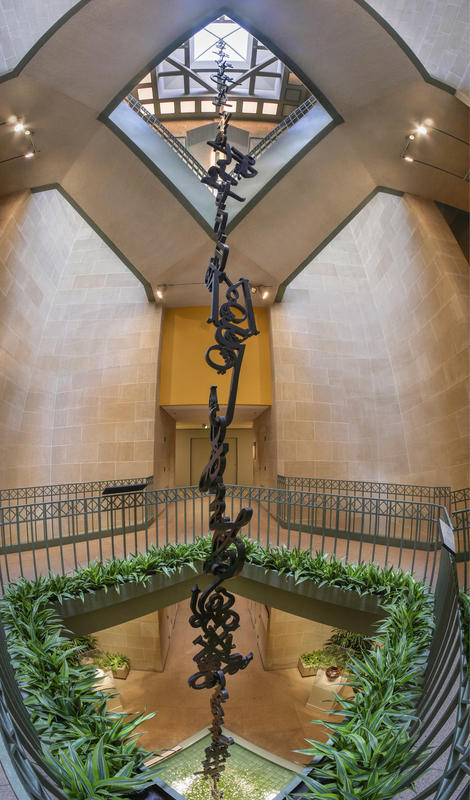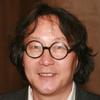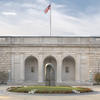More about Monkeys Grasp for the Moon

Contributor
The sculpture Monkeys Grasp for the Moon by Xu Bing may look like a giant game of Barrel of Monkeys, but it’s so much more than that.
This piece was inspired by the Chinese folktale about a bunch of monkeys attempting to steal the moon, which sounds suspiciously similar to the plot of "Despicable Me." Way to come up with an original idea, Universal Pictures. Anyways, the folktale goes on to describe monkeys all linking up to try to reach the moon, but when they get there, they realize that what they thought was the moon was only a very clear reflection of it in a pool of water below the tree. Silly monkeys, the moon is the other way!
Xu Bing, who is originally from the People’s Republic of China, moved to the United States in 1990. This move sparked his interest in language, which is why each of the “monkeys” in this chain is actually a spelled out word for monkey in one of twenty languages, including Chinese, Japanese, Thai, English, Indonesian, Urdu, Hebrew, and even Braille. The work is huge, spanning from the top floor atrium to the bottom floor lobby. Each word is linked together to make a chain that is eighty-five feet tall! And at the very bottom, of course, is a pool of water. There is also a panel on each level that identifies the languages used in that particular section of the piece. The most impressive part of this installation is that Xu actually adapted the font of each word to look like monkeys.
The funds to purchase this work were put up by the family of Madame Chiang Kai-shek, the First Lady of the Republic of China. This piece is meant to honor her visit to the Joint Session of Congress in 1943, when she addressed Congress, "We in China, like you, want a better world, not for ourselves alone, but for all mankind, and we must have it." With this quote for context, the inspirational work seems to actually be quite cynical. All around the world, cultures and countries band together try to make a better world, but we're really just monkeys going in the wrong direction.
Sources
- "Monkeys Grasp For The Moon." Freer | Sackler. Web. 12 Oct. 2018. https://archive.asia.si.edu/collections/edan/object.php?q=fsg_S2004.2.1…
- "Xu Bing: Monkeys Grasp For The Moon – Freer|Sackler." Freersackler.si.edu. Web. 12 Oct. 2018. https://www.freersackler.si.edu/exhibition/xu-bing-monkeys-grasp-for-th…
- "Xu Bing: Monkeys Grasping For The Moon | US-China Institute." China.usc.edu. Web. 12 Oct. 2018. https://china.usc.edu/calendar/xu-bing-monkeys-grasping-moon











